Exploring Freedom and Eternity in Art and Culture
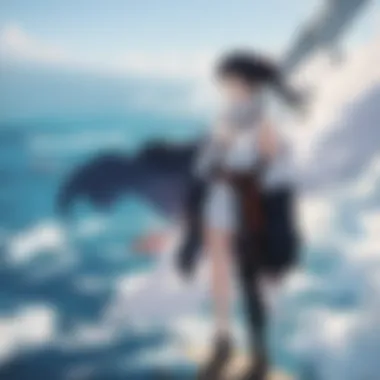
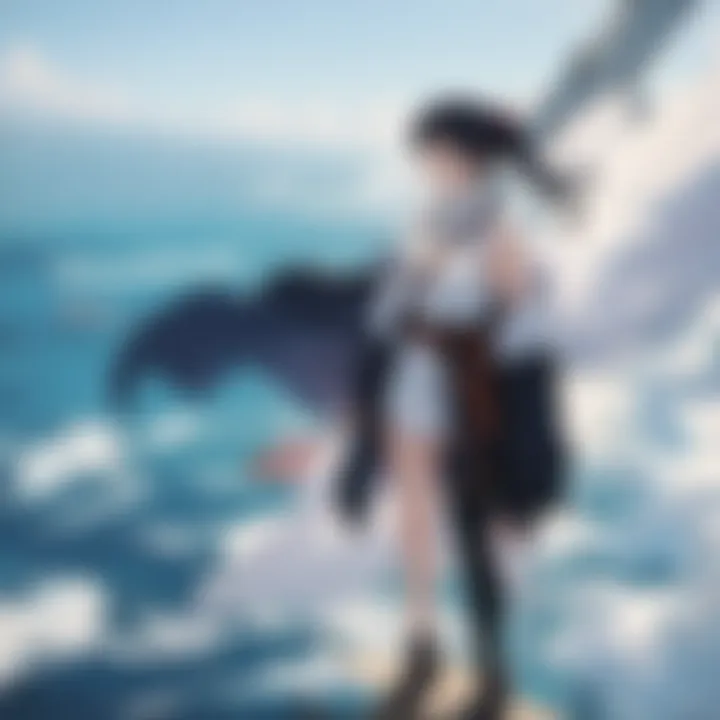
Intro
Art serves as a powerful medium that captures complex ideas, emotions, and philosophies. Among the various themes explored, the concepts of freedom and eternity stand out, particularly in anime and manga. These forms of art have a distinct way of discussing what it means to be free and how eternity shapes human experiences. Understanding this interplay can enhance our appreciation for the narratives and characters we encounter.
In examining freedom, we often look at the character's struggle against constraints—be they societal norms, personal obstacles, or systemic issues. Eternity, on the other hand, brings forth reflections on time, existence, and the impact of decisions made today. This article aims to dissect these intricate themes. We will analyze key characters, delve into thematic explorations, and showcase popular series that resonate with these ideas.
The insights gathered from studying these concepts not only inform our understanding of individual characters but also speak to broader cultural perceptions. Anime and manga become a lens through which we view our own lives and values.
Character Profiles
Overview of Main Characters
In exploring freedom and eternity, character development is central. Main characters often embody the struggles and aspirations associated with these themes. For instance, a character like Shinji Ikari from Neon Genesis Evangelion epitomizes the struggle for personal freedom against existential crisis. His journey is not solely about physical freedom but reflects a deeper quest for self-acceptance.
Another example is Edward Elric from Fullmetal Alchemist. His narrative encapsulates the desire for freedom from past choices and the weight of eternal consequences stemming from those choices. Such character arcs provide a rich ground to investigate how freedom and eternity intersect in their pursuits.
Supporting Characters
Supporting characters play an equally vital role in complementing these themes. For example, Alphonse Elric, Edward’s brother, represents the eternal bond of family and sacrifice. His presence in the narrative reinforces the emotional weight that freedom can carry. Examples such as these demonstrate the importance of a character’s trajectory in highlighting how freedom and eternity manifest within their stories.
Theme Exploration
Central Themes
The exploration of freedom often digs into questions of autonomy, choice, and the repercussions of decisions made. In series like Attack on Titan, the battle for freedom is portrayed through a societal lens, raising questions about individual freedoms versus collective safety.
On the contrary, eternity is frequently examined through the prism of regret and remembrance. In Your Name, the passage of time and its effects on personal connections illustrate how eternity can provide both solace and despair. These themes compel audiences to consider the weight of their own narratives.
Cultural References
Cultural references within anime and manga deeply inform how freedom and eternity are perceived. For instance, Japanese mythology often intertwines with these themes, offering rich narratives about gods and mortals navigating the realms of choice and fate. Such references add layers of meaning, enriching both character arcs and plotlines.
Popular Series and Recommendations
Top Anime Series of the Year
Selecting series that exemplify themes of freedom and eternity can greatly enhance your viewing experience. Recent notable mentions include:
- Jujutsu Kaisen – Explores the costs of freedom in the face of powerful adversaries.
- Demon Slayer – Focuses on the eternal battle between good and evil, with characters seeking freedom from their demons.
Hidden Gems in Manga
While mainstream titles often dominate discussions, some hidden gems also merit exploration. Consider:
- The Promised Neverland – A gripping narrative about children seeking freedom from captivity.
- BLAME! – An expansive take on a future devoid of choices, illuminating the essence of eternity in a dystopian context.
In summary, the intertwined themes of freedom and eternity in anime and manga are crucial for understanding character motivations and narrative structures. By examining these concepts in detail, readers can appreciate the deeper messages that resonate through these art forms.
Understanding Freedom in Art
The exploration of freedom within art is vital for several reasons. It transcends mere expression and delves into the human experience. Freedom in art allows artists to reflect their unique perspectives, influenced by personal beliefs, societal norms, and cultural histories. In this section, we will dissect the various elements that contribute to understanding freedom in art, focusing on its definition, the mechanisms of creative expression, and how these elements play out within Japanese media experiences.
Defining Freedom: A Contextual Approach
The concept of freedom can be subjective, influenced by cultural and historical contexts. In the art world, freedom can be viewed in terms of the liberty an artist has in expressing their vision. This encompasses not just artistic choices, such as themes and styles, but also the societal impacts on these choices.
Understanding freedom requires us to analyze various philosophical interpretations. Some theorists consider freedom as the absence of constraints, allowing for unrestricted artistic endeavors. Others interpret it as a more nuanced concept, one that includes responsibilities and implications of art on society. This contextual approach creates a layered understanding of freedom in art, emphasizing that it is not merely the ability to create but also the implications and messages carried within that creation.
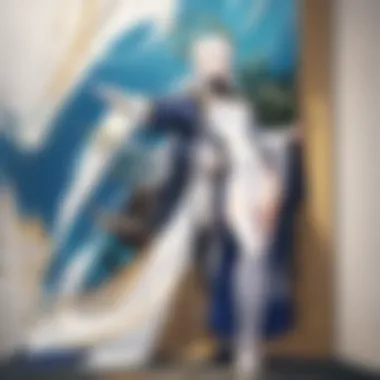
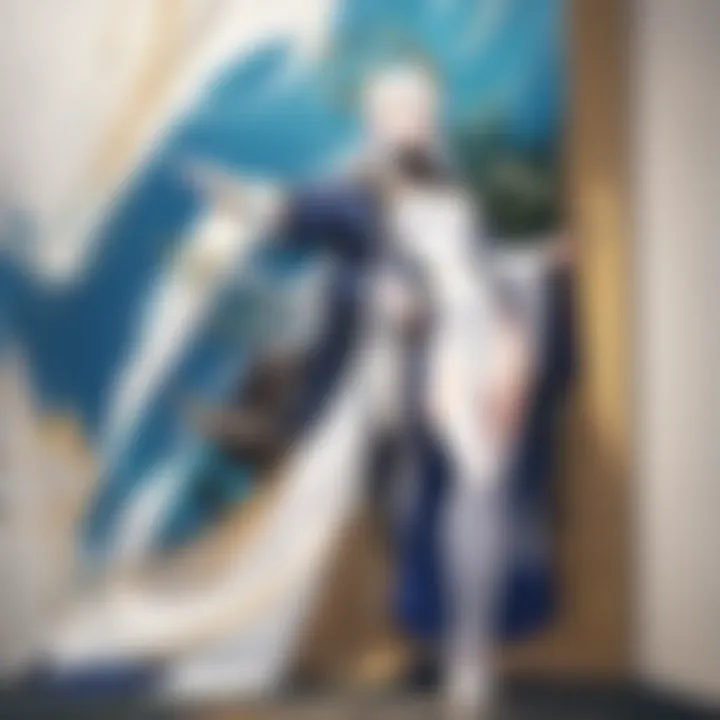
The Role of Creative Expression
Creative expression is fundamental to the concept of freedom in art. It serves as a narrative tool where artists can convey their thoughts, challenges, and views on existence. Through mediums like painting, sculpture, and more prominently, anime and manga, artists have found avenues to both reflect and confront societal expectations.
For instance, in Start Story, the use of character designs and story arcs often reflects the creators’ thoughts on personal freedom and societal constraints. Such narratives can inspire viewers to contemplate their own perceptions of freedom. The freedom to express oneself artistically thus not only benefits the creator but also engages the audience in a dialogue about their own realities and choices.
Freedom vs. Conformity in Japanese Media
In Japanese media, a clear struggle between freedom and conformity is often portrayed. Works in anime and manga frequently highlight the tension between individual desires and societal expectations. For example, Attack on Titan frames its narrative around characters grappling with the choice of following established norms or breaking away to seek personal truth.
This dynamic is not limited to thematic elements. The artistic style, character development, and plot structures also reflect this duality. Artists may initially conform to popular trends, yet many seek to carve an individual path, pushing against these boundaries. Successfully navigating this dichotomy not only enhances storytelling but also reinforces the critical examination of cultural values.
Art is a reflection of the artist's inner freedom, intertwined with the constraints of society. Understanding this interplay enriches our interpretation of their work.
Thus, understanding freedom in art is not just an examination of creative liberty; it encompasses a broader discussion of individuality versus societal constraints, particularly in the rich landscape of Japanese media.
The Concept of Eternity in Art
Eternity in art carries deep significance, particularly within the context of anime and manga. This theme transcends straightforward representations and prompts discussions about permanence, cycles, and transcendental experiences. Artists employ the notion of eternity not just to express an unending timeline but to explore how time shapes characters, narratives, and cultural perceptions. The connections established through these eternal themes influence audience engagement and their interpretation of the artwork. By diving into this aspect, the article emphasizes the importance of eternity as a core element that enriches artistic endeavors and cultural understanding.
Temporal Dimensions in Narrative
Temporal dimensions in narrative serve as crucial tools for expressing the concept of eternity. In anime and manga, time can bend, loop, or expand, allowing creaters to engage with the concept of eternity in varied ways. Non-linear storytelling finds a prevalent place in series like Steins;Gate or The Garden of Words, where characters navigate through past and future events, revealing deeper connections to their present identities. This manipulation of time enhances drama and adds layers to character arcs, often leading to a cathartic resolution.
Many anime and manga employ flashbacks, dreams, or alternate realities, not only to enrich the plot but to impart broader messages about the cyclical nature of life. The significance of choices, the weight of history, and the influence of ancestral memory shape narratives profoundly. As these stories unfold, they often remind viewers that every action reverberates through time, underscoring the eternal struggle between free will and fate.
"In embracing eternity, anime and manga present not just stories, but reflections of a larger human experience that resonates across time."
Eternal Themes in Anime and Manga
Eternal themes manifest vividly in specific narratives within anime and manga, often addressing profound existential questions. A notable example is the series Neon Genesis Evangelion, where themes of existence, identity, and communal suffering loop back to the concept of revival and renewal. Characters in these stories grapple with their realities, often in a quest for freedom from constraints imposed by time and society.
Another significant series is Your Name, which intertwines fate and time through the lens of love and connection. The dual timelines allow viewers to ponder the significance of moments, underscoring how fleeting interactions can carry eternal repercussions. This blending of time genres not only enriches plots but also invites introspection regarding individual and collective destinies.
Additionally, the theme of reincarnation is frequently explored in works like Inuyasha, revealing how love and experience traverse lifetimes. This perception of eternity highlights a cyclical understanding of life and the continuous evolution of characters through varying circumstances.
Cultural Reflections: Freedom and Eternity in Japanese Society
The exploration of freedom and eternity in the context of Japanese society is crucial to understanding how these themes shape art and culture. Japan’s unique history and social dynamics contribute to the distinct ways in which freedom and eternity are perceived and represented. This section delves into the interplay between cultural expressions and the underlying societal values related to these concepts. By analyzing historical developments, philosophies, and aesthetic principles, we can uncover deeper meanings that resonate through various forms of Japanese art.
Historical Overview of Japanese Art Forms
Japanese art has a rich and complex history that reflects the evolution of societal values and beliefs. From the early traditions of pottery and textiles to contemporary practices in anime and manga, each art form reveals cultural narratives that deal with ideas of freedom and eternity. Traditional art forms like ukiyo-e printmaking capture transient moments of life, but they also embody a sense of timelessness that aligns with the concept of eternity.
The impact of different historical periods, such as the Edo period, saw an emphasis on individual expression in art. This era also brought about a fixation on nature and the passage of time, illustrated through beautiful landscapes or seasonal motifs. Such elements encourage reflection on both personal freedom and the enduring nature of existence.
Philosophical Underpinnings of Freedom
In Japanese philosophy, freedom is not merely an individual pursuit. Instead, it is often perceived in collective contexts, such as community well-being and societal harmony. Philosophers like Nishida Kitaro have emphasized the integration of personal freedom with the responsibilities towards society. This approach informs how characters in anime and manga navigate their journeys, often wrestling with personal desires against social duties.
Moreover, concepts like "mono no aware" highlight the beauty of transience, suggesting that true freedom lies in accepting impermanence rather than resisting it. This philosophy encourages audiences to appreciate the fleeting moments in life, thereby enhancing their understanding of freedom in a broader sense.
Eternity and the Japanese Aesthetic
The Japanese aesthetic is deeply intertwined with the notion of eternity. This can be seen in many traditional art forms, where there is a constant dialogue between the present moment and the infinite. The concept of "wabi-sabi" celebrates imperfection and transience, suggesting that beauty exists in the acceptance of the temporal.
Anime and manga often explore these themes, illustrating characters who face the inevitable passage of time and change. Their stories are woven with elements of nostalgia, offering audiences glimpses into the eternal within the ephemeral. The ability to find meaning in moments that fade away is a recurring motif, pushing viewers to reflect on their own perceptions of life and its lasting impressions.
The relationship between freedom and eternity in Japanese culture is not a simple dichotomy; rather, it is a fusion that informs artistic expression and societal values.
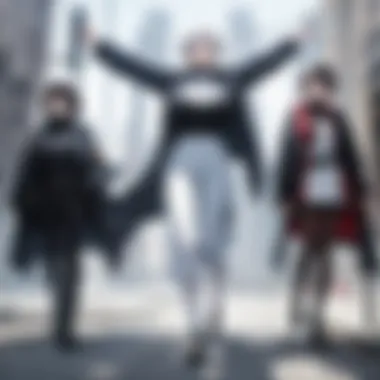
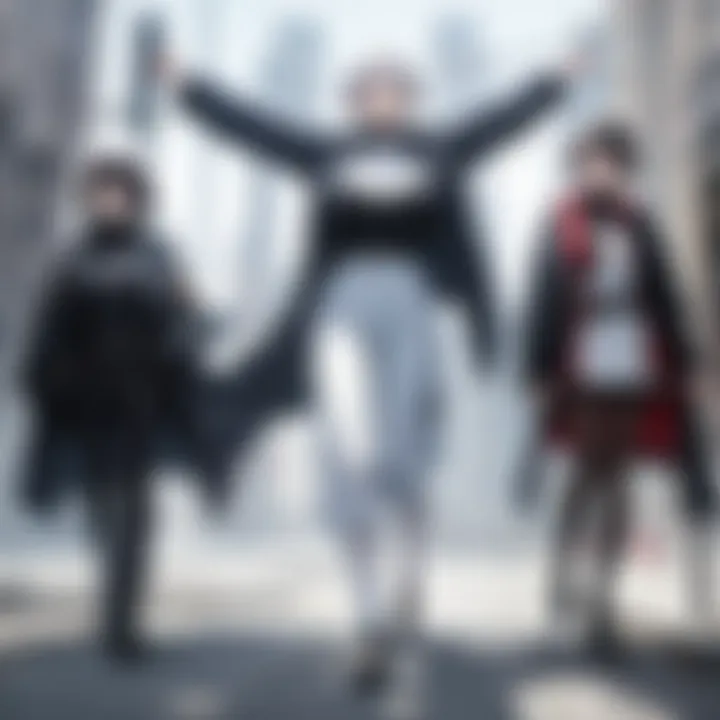
Japanese art, therefore, provides profound insights into how freedom and eternity coexist, influencing both individual expressions and collective narratives. This intricate relationship continues to evolve, making it an engaging subject for those interested in the cultural implications of these themes.
Character Analysis: Freedom and Eternity in Arc Development
Analyzing characters within anime and manga provides insights into how freedom and eternity shape narrative structures and thematic explorations. The development of characters is critical in illustrating these concepts. In many stories, protagonists and antagonists reflect different aspects of freedom and existential challenges. Their journeys often serve as metaphors for larger societal reflections.
The significance of character arcs is evident in the way they navigate obstacles. This navigation embodies a struggle between freedom of choice and imposed limitations. As the characters evolve, they often grapple with profound ideals of personal agency and the sense of timelessness associated with their stories. Such exploration deepens audience engagement and contributes to the overall narrative experience.
Protagonists and Their Journeys
Protagonists frequently embody the quest for freedom. Their journeys are marked by challenges that test their resolve and beliefs. Each step taken is a confrontation with the expectations and norms imposed by their surroundings.
For instance, in Hideaki Anno's Neon Genesis Evangelion, Shinji Ikari represents the inner conflict of wanting to connect with others versus the desire to withdraw for self-preservation. His journey illustrates the delicate balance between freedom of self-expression and the burden of choice. As he confronts various threats, both internal and external, his decisions reflect the broader existential themes.
Apart from individual choices, protagonists may also connect with deeper historical narratives. In works like My Neighbor Totoro, the exploration of familial bonds highlights a sense of eternal innocence and the enduring nature of childhood wonder. As these characters navigate life's challenges, they offer audiences a sense of hope and resilience.
Antagonists and Themes of Control
Antagonists, on the other hand, often symbolize the constraints that inhibit freedom. Their motivations usually spring from a desire for control, whether over others or in pursuit of power. This creates a compelling contrast with protagonists. The battles between these forces often lead to critical reflections on autonomy and governance.
In Fullmetal Alchemist, the homunculi serve as representations of humanity's darker impulses, each embodying a sin that restricts freedom. The pursuit of power by characters like Father illustrates how the quest for domination can lead to a loss of humanity, in turn creating a sense of eternal conflict within the narrative.
Such antagonistic forces enhance the complexity of plot dynamics. They challenge protagonists to question their beliefs, forcing them to grow and adapt. The resolution of these conflicts often implicates broader societal themes of justice, personal growth, and the understanding of one's place in the world.
Character arcs are not just individual stories; they reflect societal struggles for freedom and autonomy in the face of formidable constructs.
Narrative Structures: Weaving Freedom and Eternity
The concept of narrative structures is central to understanding how freedom and eternity are expressed in art, particularly in anime and manga. In these mediums, storytelling is not merely a vehicle for entertainment. Instead, it serves as a profound exploration of complex themes affecting both characters and audiences alike. By weaving freedom and eternity into the fabric of narratives, creators convey ideas that resonate deeply with viewers and readers. These structures illuminate the duality of existence—an ongoing balancing act between longing for autonomy and the inexorable march of time.
One important aspect of these narrative structures is the technique of non-linear storytelling. This approach allows artists to explore subjects of freedom and eternity from multiple angles. It can present characters’ pasts, futures, or even alternate realities, granting the audience insight into how choices reverberate through time and impact individual liberty. With this structure, creators can emphasize the fluidity of freedom and how the past informs the present and future.
Another relevant component is symbolism, particularly the use of artifacts that denote freedom and time. Such symbols can range from physical items—like clocks or open doors—to thematic elements echoing concepts of liberation and permanence. By incorporating these artifacts into narratives, creators invite viewers to engage with deeper philosophical questions.
Ultimately, the weaving of freedom and eternity through narrative structure enriches the viewing experience, allowing audiences to reflect on the nature of their existences within this temporal and confined reality.
Non-linear Storytelling Techniques
Non-linear storytelling has become a hallmark of contemporary anime and manga. This technique allows for more profound engagement with the themes of freedom and eternity. By disrupting chronological flow, a story can illustrate how moments in time are interconnected and influence one another.
Examples abound, particularly in works like "Steins;Gate" or "The Tatami Galaxy," where shifts across timelines explore characters' desires and decisions. Here, each narrative branch highlights the choices made in pursuit of freedom and how those choices intertwine with the inevitable constraints imposed by time. This technique allows viewers to appreciate the complexity of characters’ journeys and understand their struggles in a more holistic manner.
- Non-linear storytelling provides several key benefits:
- Enhanced thematic exploration: Audiences can parallel journeys in time and space.
- Character depth: Protagonists become multi-dimensional, revealing motives through varied timelines.
- ASuspense and intrigue: Unpredictable story paths keep audiences engaged and curious about outcomes.
Symbolism: Artifacts of Freedom and Time
Symbolism in anime and manga operates as a potent means of articulating ideas of freedom and time. Artifacts within narratives often serve as physical manifestations of these abstract concepts, enriching the storytelling experience. Commonly used symbols include:
- Clocks: Representing the relentless passage of time, exploring how choices can impact future outcomes.
- Doors or pathways: Signifying opportunities for freedom and divergent choices.
- Mirrors: Reflecting the duality of self—what one chooses versus what one is destined for.
These artifacts enable creators to communicate complex ideas succinctly. For example, in the anime "Your Name," the characters' experiences with time and identity are underscored by the recurring imagery of a mysterious shrine. The shrine acts as a nexus of freedom, facilitating paths between lives that seem otherwise disconnected.
By embedding such symbols, narratives not only capture the audience's attention but also provoke thought on how freedom interacts with the seemingly eternal dimension of time.
The art of storytelling in anime and manga serves as a platform to explore intricacies between freedom and eternity, illuminating the human experience.
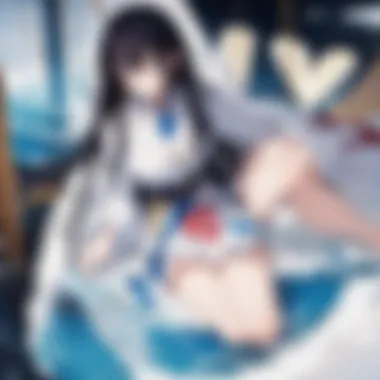
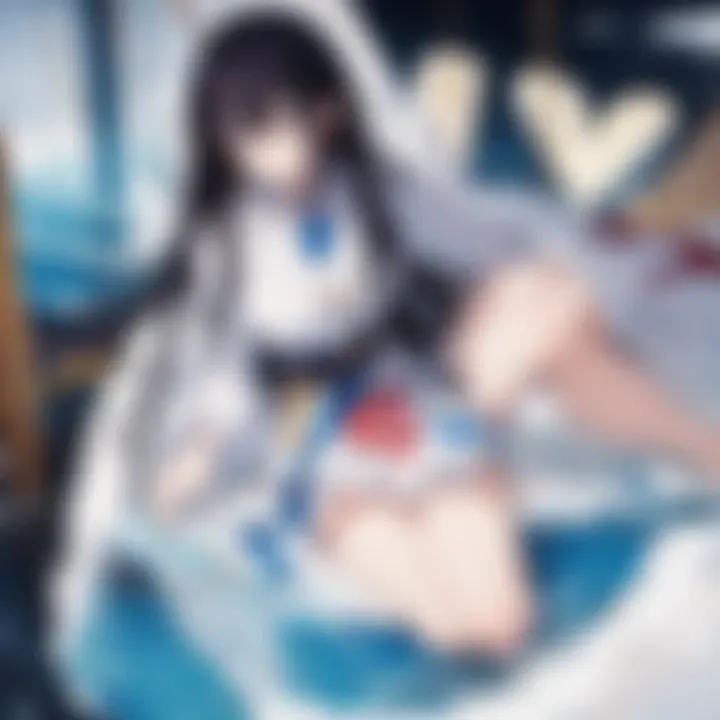
Through careful analysis of these narrative structures, it becomes clear how integral they are to exposing the breadth of human experience, allowing for deeper dialogue between creator and audience.
Cultural Impact: Perceptions of Freedom and Eternity
In exploring the themes of freedom and eternity, it is crucial to understand their cultural impact, especially within the sphere of art, where these concepts can manifest in diverse ways. The perception of freedom often ignites discussions around individual autonomy and self-expression, while eternity invites reflections on timelessness and the cyclical nature of existence. This duality shapes not only artistic expressions but also the cultural dialogues that arise from them. The interplay of these themes resonates with audiences, prompting deeper engagement and interpretation.
Audience Reception and Interpretation
The reception of art that intertwines freedom and eternity can vary significantly based on cultural context. Audience interpretation plays a vital role in how these themes are understood. In Japanese media, for instance, characters that embody freedom often represent a struggle against societal constraints. Works like "Attack on Titan" analyze themes of oppression and liberation, drawing a strong response from viewers who identify with the characters’ journeys. This connection informs how audiences perceive the significance of freedom, allowing for a personal engagement that extends beyond the screen.
Moreover, the representation of eternity in narratives influences audience reception as well. Viewers may interpret eternal themes as reflective of their own experiences with life's transient nature. The cyclic elements in anime and manga can create a sense of continuity and belonging. Audiences often find solace in recurring motifs, fostering a deeper understanding of life’s impermanence alongside the value of freedom.
Global Influence of Japanese Media
The global reach of Japanese media significantly magnifies the themes of freedom and eternity across borders. Anime and manga are not just popular in Japan, but have become cultural phenomena worldwide. This globalization introduces a blend of cultural perspectives that enrich the interpretation of these themes. Different audiences bring their own cultural lenses when interacting with Japanese art forms, leading to a variety of interpretations.
For example, series such as "Your Name" explore the concept of eternity through the lens of fate and connection, resonating universally with themes of love and loss. Likewise, "Naruto" portrays characters seeking freedom through personal growth and societal acceptance, themes that resonate strongly with viewers worldwide.
Overall, the global influence of Japanese media fosters manifold perceptions of freedom and eternity, encouraging dialogue among diverse audiences. The cultural discussions spurred by these narratives provide insight into how fundamental human experiences manifest across different societies.
"Art is a way of discovering yourself and understanding the world around you."
As audiences continue to engage with these themes, the ongoing evolution of perceptions around freedom and eternity in art suggests an enduring dialogue that enriches both personal and cultural narratives.
The Future of Freedom and Eternity in Digital Media
The confluence of technology and artistic expression reshapes concepts like freedom and eternity in digital media. The digital landscape has become a prominent platform for creators, allowing for vast exploration of themes that transcend traditional boundaries. As technology evolves, the implications of freedom and eternity will significantly influence future art forms, especially in anime and manga.
Digital media provides unprecedented freedom for creators. It allows artists to experiment with formats and styles. The barriers of entry are lowered, meaning diverse voices can emerge. This diversity enriches narratives, allowing for multiple interpretations and encouraging a global audience engagement. Freedom in this context becomes a fundamental catalyst for innovation, enabling creators to delve into complex issues often overlooked in mainstream channels.
Eternity, on the other hand, finds new life in digital formats. With infinite storage and distribution possibilities, stories can transcend time and space. Classic narratives can be revisited and adapted with new technology. Concepts that resonate across generations maintain their relevance, thus prolonging their impact. The digital medium also allows creators to push the narrative of eternity by exploring themes that question the notion of reality itself, a theme that resonates strongly within certain anime and manga.
"Digital media allows us to explore boundaries that previously confined us. The combination of freedom and eternity pushes creative limits in unprecedented ways."
In summary, the future of freedom and eternity in digital media holds significant promise. As technology continues to advance, the potential for innovative storytelling in anime and manga will grow. Understanding and adapting to these trends will be crucial for art forms that wish to reflect and influence societal discussions.
Emerging Trends in Anime and Manga
Anime and manga are embracing emerging trends that align with the concepts of freedom and eternity. One notable trend is the rise of indie projects, where creators operate independently of large production studios. This shift allows for a broader range of storytelling, often focused on niche audiences. Artists can express unfiltered thoughts. This might lead to unexpected explorations of subjects like identity and social issues.
Another trend is the exploration of virtual realities and worlds. Concepts of alternate realities can illustrate feelings of freedom and confinement. These narratives often delve into existential themes, asking poignant questions about life, purpose, and the essence of being. As creators utilize technology such as VR, the layers of storytelling deepen, allowing audiences to engage with stories in immersive ways.
Furthermore, the integration of artificial intelligence in the creative process is not to be overlooked. This technology can aid in crafting intricate plots and character development, generating new opportunities for artistic expression. The blend of human creativity and AI offers fresh perspectives, enriching the landscape of anime and manga.
Impact of Technology on Artistic Expression
The impact of technology on artistic expression in anime and manga cannot be overstated. Digital tools have transformed the way art is created and consumed. Software like Clip Studio Paint and Adobe Photoshop enables artists to produce intricate works that were once limited to traditional media. Artists can easily share work online, reaching a global audience instantly, enhancing the freedom of artistic expression.
Moreover, technology fosters collaboration among artists across geographical boundaries. Projects can involve teams from different cultures and backgrounds, enriching the narrative depth. This cross-cultural exchange challenges artists to explore new themes of freedom and eternity, often resulting in unique storytelling approaches.
Closure: The Ongoing Dialogue of Freedom and Eternity in Art
An analysis of freedom and eternity in art showcases a dynamic conversation between these crucial concepts. In this article, we have explored how they manifest in various art forms, especially in anime and manga. The examination is not just an academic exercise; it reflects broader societal values and individual freedoms. The dialogue between freedom and eternity encourages artists and audiences alike to reflect on their own experiences and perceptions.
Revisiting Historical Perspectives
Studying the historical frameworks provides insight into how artists over time have approached these themes. Historical art movements often reveal a collective struggle for freedom and self-expression. For instance, during periods of oppression or societal constraints, artists used the canvas to express their yearning for freedom. In the context of Japanese culture, traditional forms like ukiyo-e have shown how artists transcended temporal limitations to capture moments of beauty and freedom.
Understanding how these perspectives have shifted through time can enhance our appreciation of current artistic endeavors. Through retrospection, we see that the search for freedom and eternity is not merely a modern phenomenon but a timeless quest portrayed through various mediums.
Implications for Future Artistic Explorations
The ongoing dialogue between freedom and eternity has vast implications for future artistic explorations. As technology evolves, new platforms for creativity emerge. Virtual reality, augmented reality, and other digital forms provide fresh avenues for artistic expressiveness. These tools can facilitate the exploration of themes like freedom and eternity in innovative ways.
Artists may draw upon the lessons learned from historical narratives while pushing against the boundaries set by conformity. This can lead to unique narratives that challenge traditional storytelling methods, creating multi-dimensional experiences for audiences. Furthermore, as cultural exchanges become more prevalent, the interpretations of freedom and eternity will likely broaden and diversify.







